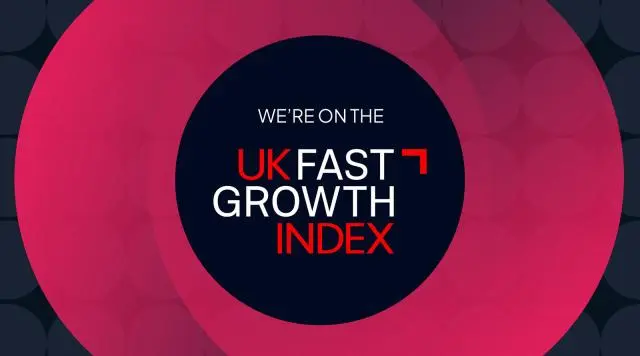What Data Consolidation is and How to Do it Right
Tue, February 06, 2024- by Paul Saxton
- 5.5 minute read

McKinsey predicts that almost every aspect of work will be optimised by data by 2025. But what happens when that data is spread across multiple sources and employees are forced to pull data from disparate systems?
That’s a recipe for inefficient workflows, poor data quality, and lacklustre insights. These are hardly the kind of benefits that McKinsey predicts.
The solution?
Data consolidation. By consolidating all your data into a unified view, you can lower costs, streamline data management, and generate significantly better insights.
In this article, we’ll explain exactly how data consolidation can solve your problems, the things businesses often get wrong when consolidating data and how 5Y can help you do things differently.
What is data consolidation?
Data consolidation is the process of combining multiple data sources into a single database that’s stored onsite or in the cloud.
The average business will collect data from dozens of systems, applications and platforms, including:
- CRMs
- ERPs
- HR Platforms
- Content management systems
- eCommerce platforms
- Microsoft Dynamics
While you can analyse the data within each platform, generating the kind of transformational insights Power BI promises becomes a lot easier when you have a unified view.
What does data consolidation achieve?
There’s certainly no shortage of benefits available to businesses that successfully consolidate data.
Better insights
Properly consolidated data can generate transformational business insights. Part of that is because you have access to all of your company’s data in one place, making it much easier to connect the dots and see patterns that would be impossible to spot if you kept data siloed.
But data consolidation also ensures your data is high quality. Part of the process involves transforming data into a common format, meaning discrepancies such as duplicate entries are removed.
Streamlined data management
It’s a lot easier to manage all your data when it’s stored in a single repository. Consolidation also means there are fewer points of failure in your systems, which means less downtime and less risk.
Security issues are also reduced as a result of having a smaller attack landscape.
Lower costs
Businesses can save a significant amount of money by consolidating data. Consolidation will reduce redundancy, let you sunset legacy systems and reduce the operational cost of storing data.
What’s more, the insights you can generate from a centralised data source can save your company so much more by identifying areas of overspending or where issues are having a significant impact on your budgets.
Consolidating data with ETL
You can use several strategies to consolidate your data, but ETL is the most popular method.
ETL or Extract, Transform and Load is the process of replicating data from separate systems, transforming it into a standardised format and transferring it to a centralised location.
It’s a three-part process:
- Extract: First, you need to extract the data from the source system.
- Transform: Next, the data is transformed into a common structure, and issues like inconsistencies and duplicates are resolved.
- Load: Finally, you load the data into a centralised database.
Data consolidation can happen in two ways: in real-time or by batch processing.
Real-time ETL means the transfer happens as soon as the original data is captured, usually using a process called change data capture (CDC). Batch processing means transferring the data in bulk at specified times.
While a real-time ETL gives your data team immediate access to insights, batch processing is significantly less resource-intensive and a better choice for high-volume data sources. It’s why the 5Y Unified Data Platform uses both methods.
How can data consolidation go wrong?
Data consolidation is far from straightforward. Below are the most common challenges businesses will face:
No expertise
Trying to consolidate databases in-house is a time-consuming and expensive task. Frankly, most teams don’t have that kind of talent or resources to hand.
Hiring third-party help can prove just as challenging, however, especially if you are trying to build a custom system with unique requirements — the kind that needs to be hand-coded from scratch. These kinds of projects rarely come out under budget.
It’s why we’ve designed our solution to give clients the best of both worlds: an outsourced service without a consultancy price.
The solution doesn’t scale
It’s one thing to build a solution that consolidates the data you have right now. But what happens in five or ten years when the quantity of your data quadruples? All too often, businesses build one solution for right now and then have to spend even more money in future.
That’s not an issue with the 5Y Unified Data Platform, which is designed to scale almost infinitely with your business without reducing performance or increasing latency.
Incompatible data
Very few systems will provide data in a common format. That’s why one of the biggest challenges for teams is formatting data during the ETL phase — one that often sees teams resort to expensive hand-coded solutions.
It’s why we designed the Unified Data Platform to automatically recognise and transform information from the most common sources into a common data structure.
Latency
Is your team working with the most up-to-date data? If you’ve built your own data consolidation tool, there’s a good chance they are not. Data latency is a common issue with data consolidation platforms because of the way data is transferred from the origin system into the centralised data warehouse.
That’s not a problem with the 5Y Unified Data Platform, though, which provides real-time or batch processing.
How can you make data consolidation a success?
Problems aside, what can you do to make your data consolidation process successful? We think a good strategy has the following components:
- Well-defined goals. Knowing what you want to do with your consolidated data and why you want to consolidate it in the first place is essential. It’s only by being incredibly clear on what you want to achieve that you can make sure you build a plan that gets you successfully from point A to point B.
- Clean data. You need to go to great lengths to transform all of your data into a common data format. This is the hardest part of the process, but it’s also the most important. If that wasn’t enough, you should also keep a record of the transformations applied to the raw data and the original data as a reference.
- The right tools or platform. Most businesses won’t be able to afford a hand-coded solution, nor should they risk locking their data into a black box. We recommend finding a platform that streamlines the process and scales with your business in the future.
- An expert partner. Most businesses won’t have the expertise in-house to consolidate data on their own. A trusted partner can guide the way and show you how to achieve your data needs on time and on budget.
How to consolidate data with 5Y
If you haven’t guessed already, we do data consolidation differently at 5Y. We give clients the best of both worlds: an easy-to-use ETL-style platform and the experience of a 50-strong team of data experts,
We’ve designed our Unified Data Platform to ingest, consolidate and transform hundreds of disparate data sources quickly and easily. It achieves that by combining ETL processes with data vault methodology, Microsoft Layers components and common data structures.
The result is a fully audited data vault with automated data pipelines that ingest new data as soon as it is created — all delivered at a significantly lower TCO compared to building a bespoke data consolidation solution.
Start your data consolidation journey today
Find out just how fast and easy 5Y has made data consolidation by booking a demo today. Alternatively, request a custom quote, and we’ll show you exactly how cost-effective the 5Y Unified Platform can be.

 Saudi Arabia
Saudi Arabia




